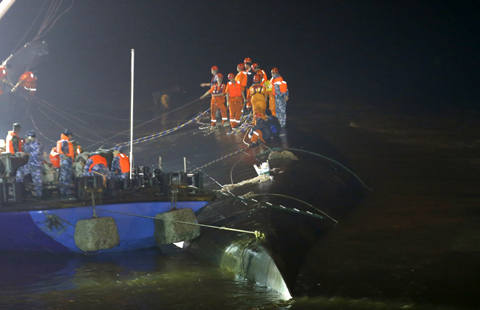
Great potential, challenges await Kenya and East Africa as sgr construction starts
I have increasingly sustained a research interest in the nexus between economic growth and infrastructure development.
Scholars believe that infrastructure provides services that form a part of the consumption of a country's residents, and also that it augments capital and labor as an input in the production process. It is further argued that infrastructure drives societal progress by promoting human development and better quality of life through improved productivity and sustainable economic growth.
More specifically, infrastructure enhances trade and commerce, encourages cultural exchanges that can promote national integration and reduce conflict, and eases labor mobility. Research and policy analysis also point to the important role infrastructure provision might play in the alleviation of poverty and inequality.
The Standard Gauge Railway is one of the flagship projects of Kenya's Vision 2030 development strategy and is envisioned to facilitate seamless railway transportation across Kenya, Uganda, Rwanda and South Sudan. The Kenyan government will roll out the SGR plan in two phases: Mombasa to Nairobi, and Nairobi to Malaba and Kisumu.
The consolidation and implementation of the Kenyan project is deemed to be the path-breaking phase of the entire railway project, as the feasibility studies and preliminary design for other countries are yet to be completed. It is also expected that this will further support the tripartite agreement to build a standard gauge railway line connecting Mombasa, Kampala and Kigali.

This railway project, which will be undertaken by the China Road and Bridge Corp, is expected to increase railway transport penetration, which is at 5 percent with the current meter-gauge railway, versus a 94 percent domination by road transport in freight movements. Mombasa is expected to handle more than 30 million metric tons annually by 2030, up from 22 million tons. This is corroborated by the fact that the Northern Corridor region substantially relies on Port Mombasa for imports and exports as the need for landlocked countries to trade with other countries escalates.
As such, the salient features of the SGR have been designed to meet the expected demand for goods and services. The SGR will allow freight trains to travel at a speed of 80 kilometers an hour with a capacity of 216 TEUs (20-foot equivalent units, a unit of cargo capacity) and passenger trains up to 120 km/h carrying 960 passengers.
Railway and road transport will complement each other to provide transportation to freight destinations and the last-mile links. State of the art equipment, with environmentally compatible railway stations, with due regard for wildlife-rich areas, will be a key point of concern.
The rollout of the SGR demands the subsequent upgrading of current railway institutes and modernization of the same to provide the professional manpower for construction and day-to-day operations. The 25-year concession of the Rift Valley Railways has been questioned based on the efficiency standards maintained for the current railway line, which has been rendered inefficient as a result of neglect.
A number of immediate economic benefits are foreseen, including anticipated reduced commodity prices, since a majority are transported by road. At least a 1.5-percent increase in annual GDP growth is expected through industrialization. The reduced congestion of Port Mombasa will brand it a preferred regional facility. The enhanced freight security and reduction of road maintenance costs will enhance the region's economic competitiveness.
The SGR presents tremendous social benefits as well. At least 60 job opportunities are expected to be created per kilometer during the construction phase. And the spillover effects are expected to be far-reaching: Other jobs will be created in the local manufacturing, service and hospitality industries. Subsequently, there will be development in skills and technological transfers to complement the same. This is already evidenced by the CRBC announcing 30,000 jobs for Kenyans, including technical, operations and engineering.
However, the full embrace of SGR developments is faced with challenges and repercussions for the Kenyan economy. In as much as the China-Kenya relationship has been woven through bilateral discussions focusing on governance and economic development, the same has been questioned.
The SGR project is funded by the railway development fund levy and a $3.3 billion loan from Exim Bank of China that covers the equivalent of 90 percent of the projected costs. The stipulated terms of the contractor-negotiated loan include the Chinese export credit financing. Precautionary measures are required to watch the growth of Kenya's Chinese export credit loan book. The subsequent impact on already established institutions like the Rift Valley Railways should equally be assessed as its existing operational agreements and profitability is at stake. It is foreseen that the open access arrangement will create opportunities for RVR competitors to gain a presence in the market.
The author is a lecturer at the School of Finance and Applied Economics, Strathmore University in Kenya
(China Daily Africa Weekly 06/05/2015 page9)








